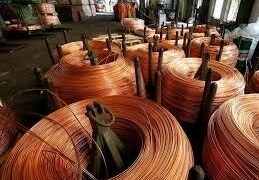July 22, 2016 Updated 7/22/2016
Email Print

CertainTeed Corp. CertainTeed Corp. is touting its vinyl siding products’ presence as a top choice with builders because of its range of colors and styles.
Vinyl siding, the No. 1 cladding material in the United States for the 22nd year in a row, keeps making strides from fade-resistant colors to increased durability against hail and hurricanes to insulated rigid foam backings that offer energy efficiency.
However, the performance improvements haven’t done as much from a design perspective, so “architects have taken little notice,” according to Kate Offringa, president of the Vinyl Siding Institute, a trade association based in Washington.
Two new VSI initiatives aim to change that with initial input from a couple leading architects in the New Urbanism movement, which emphasizes walkable traditional neighborhood developments (TNDs) to live, work and shop as opposed to suburban sprawl.
First, VSI and its members plan to create an architectural review board to develop criteria and possibly a certification of authenticity for architects to identify existing and future polymer products that are appropriate for the TND trend. This effort, which seeks to increase desirability and obtain TND market share, is being called the traditional construction pattern program.
Also, the trade group and its members are planning a contest that will ask prominent architectural firms and industrial designers to submit new profile designs that will be evaluated by a panel of judges. This will be VSI’s architectural design competition program.
“These programs would provide opportunities to reposition exterior polymers as innovative, distinctive and highly desirable lightweight claddings, suitable for commercial projects and contemporary housing,” Offringa said in an email.
The two initiatives came out of a VSI forum held in June featuring architects Steve Mouzon and Andres Duany, who are active in the New Urbanism movement. Although manufacturers offer classically inspired trim and siding, they learned why the architectural perception of the products remains low.
Mouzon led a discussion about how architects study classical patterns and won’t accept imprecise replicas as authentic enough for use in TNDs. And Duany talked about the need for new siding patterns that don’t mimic wood. He suggested the design competition as a way to re-imagine polymer claddings along the same lines that metal siding evolved from trying to look like wood clapboard to standing out with stamped and folded sheet metal profiles that have become a popular feature of contemporary design.
“The meeting was invigorating, engaging and visionary, and the attendees left with a sense of direction and opportunity,” Offringa said.
Mouzon shared similar sentiments on his Facebook page with a June 8 post that says: “Just finished six hours of meetings that I hope will change an American industry. … I’ve said for years that the problem with vinyl siding is not the material, but the design. … The problem with vinyl siding is that it’s a bad fake of wood siding.”
Regardless, vinyl siding remains the most widely used material in construction of the 648,000 new single-family homes that began in 2015, according to the U.S. Census Bureau, which recently released its survey of construction. Vinyl was used on the exteriors of 27 percent of houses, which is down 3 percent from 2014, but still ahead of the competition from stucco (24 percent), brick (23 percent), fiber cement (19 percent), wood (5 percent) and other claddings like stone and aluminum siding (2 percent).
Vinyl siding manufacturers are experiencing their lowest market share since 1993, when the industry was on an upswing to its all-time high market share of 40 percent in 2002. The siding material has been losing ground by 1-3 percent since 2010.
“Vinyl siding has faced continued competition from other materials perceived to be more aesthetically pleasing. Nevertheless, vinyl siding is expected to remain the leading material installed in the U.S. throughout the forecast period because of its low cost, long lifespan, and minimal maintenance needs,” according to a news release about a recent study from Freedonia Group Inc., a Cleveland-based market research firm.
Freedonia forecasts overall demand for siding in the U.S. will increase 5.6 percent per year to 100 million squares in 2019 with a value of $ 10.7 billion. Each square equals 100 square feet of siding. Vinyl siding should see annual growth of about 4.4 percent compared to 7.6 percent for brick, 6.7 percent for stucco, 6.1 percent for fiber cement and 4.3 percent for wood, Freedonia says.
While the vinyl siding industry looks to appeal to more architects, Malvern, Pa.-based CertainTeed Corp. is touting its accolades in the 2016 brand use study by Builder magazine, which is based on input from 1,300 builders and general contractors. CertainTeed’s vinyl siding and insulated vinyl siding products were a No. 1 choice due in part to the wide selection of 40 colors and variety of lap and vertical options.
A subsidiary of Saint-Gobain, one of the world’s largest and oldest building product companies, CertainTeed has more than 60 manufacturing facilities in the U.S. and Canada. With estimated sales of $ 630 million, which is up 2.4 percent from a year ago, CertainTeed is the No. 6 pipe, profile and tubing extruder in North America, according to Plastics News’ latest ranking.





























